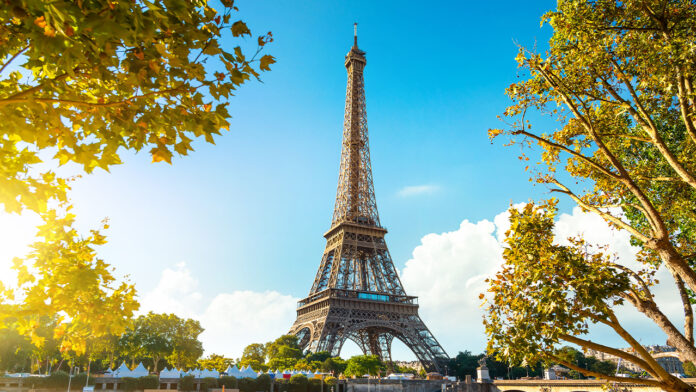The Eiffel Tower stands as an enduring symbol of Parisian elegance and engineering prowess, captivating visitors from around the world with its graceful silhouette and iconic presence. In this article, we unveil the fascinating history, architecture, and cultural significance of the Eiffel Tower, shedding light on the marvels that have made it one of the most recognizable landmarks on the planet.
Construction and Design
Gustave Eiffel’s Vision: Designed by renowned engineer Gustave Eiffel, the Eiffel Tower was constructed as the centerpiece of the 1889 Exposition Universelle (World’s Fair) held in Paris to commemorate the 100th anniversary of the French Revolution. Eiffel’s vision was to create a grand monument that would showcase France’s technological prowess and celebrate the spirit of progress and innovation.
Architectural Marvel: The Eiffel Tower’s innovative design features a lattice framework made of wrought iron, which allows for both structural stability and aesthetic elegance. Standing at a height of 324 meters (1,063 feet), it held the title of the tallest man-made structure in the world until the completion of the Chrysler Building in New York City in 1930.
Construction Challenges
Engineering Feats: Constructing the Eiffel Tower presented numerous engineering challenges, including the assembly of over 18,000 individual iron parts and the installation of over 2.5 million rivets. Despite initial skepticism and opposition from some quarters, Eiffel and his team overcame these obstacles through meticulous planning and innovative construction techniques.
Rapid Assembly: Remarkably, the Eiffel Tower was erected in just over two years, with construction beginning in January 1887 and concluding in March 1889. This rapid assembly was made possible by prefabricating the iron components off-site and then assembling them on-site using hydraulic cranes and scaffolding.
Cultural Significance
Symbol of Modernity: The Eiffel Tower quickly became a symbol of modernity and progress, embodying the spirit of the Belle Époque era in France. Its sleek silhouette and towering presence captured the imagination of artists, writers, and intellectuals, who saw it as a testament to human ingenuity and technological advancement.
Tourist Attraction: Over the years, the Eiffel Tower has evolved into one of the most visited tourist attractions in the world, attracting millions of visitors annually. Its observation decks offer panoramic views of Paris, making it a must-see destination for travelers seeking to experience the city’s beauty and grandeur from above.
Iconic Status
Global Recognition: The Eiffel Tower’s iconic silhouette has become synonymous with Paris and France, serving as a universal symbol of romance, elegance, and sophistication. Its likeness has been replicated in countless forms, from souvenirs and postcards to film and literature, cementing its status as a cultural icon.
Light Shows and Events: To further enhance its allure, the Eiffel Tower is illuminated with sparkling lights every evening, creating a mesmerizing spectacle that captivates visitors and locals alike. Additionally, the tower serves as a backdrop for various cultural events, including concerts, art installations, and fireworks displays.
Preservation and Restoration
Ongoing Maintenance: Despite its enduring appeal, the Eiffel Tower requires ongoing maintenance and restoration efforts to ensure its structural integrity and safety. Regular inspections, cleaning, and repainting are carried out to protect the iron framework from corrosion and deterioration.
UNESCO World Heritage Site: In recognition of its cultural significance and architectural importance, the Eiffel Tower was designated a UNESCO World Heritage Site in 1991. This prestigious designation underscores its status as a global treasure and underscores the importance of preserving it for future generations.
Fun Facts and Trivia
Secret Apartment: Gustave Eiffel had a private apartment located at the top of the Eiffel Tower, where he entertained guests and conducted experiments. Although it is no longer furnished, visitors can still glimpse the space during guided tours of the tower.
Temporary Structure: Originally intended as a temporary structure for the World’s Fair, the Eiffel Tower was slated for demolition after 20 years. However, its value as a radio transmission tower during World War I and subsequent popularity as a tourist attraction led to its preservation and enduring legacy.
Conclusion: Celebrating the Legacy of the Eiffel Tower
In conclusion, the Eiffel Tower stands as a testament to human ingenuity, engineering excellence, and cultural significance. From its humble beginnings as a temporary exhibit at the 1889 World’s Fair to its status as a global icon of elegance and romance, the Eiffel Tower continues to captivate and inspire millions of visitors from around the world. As we celebrate its rich history and enduring legacy, let us marvel at the timeless beauty and engineering marvel that is the Eiffel Tower, a symbol of Parisian grandeur and human achievement.

